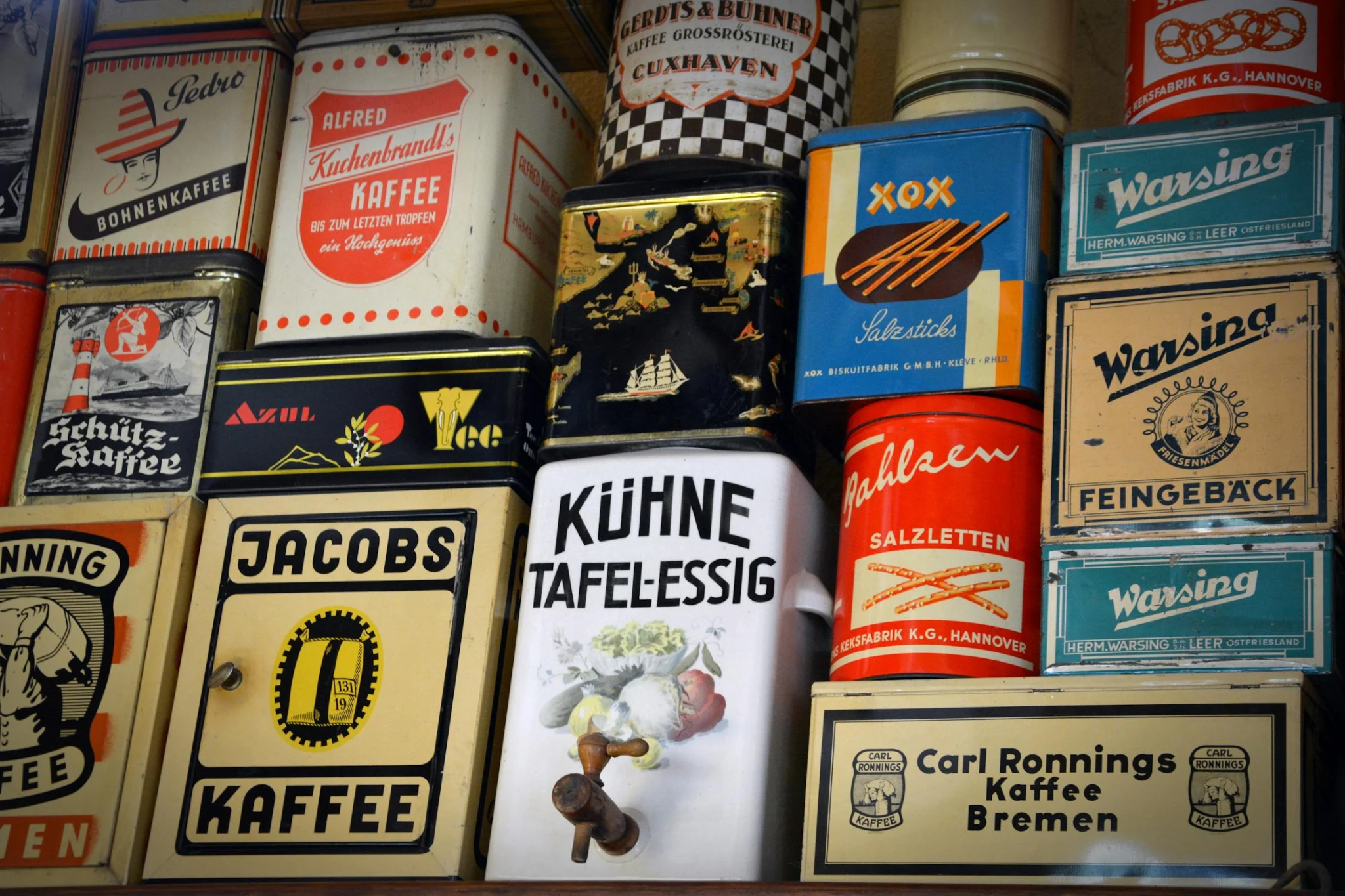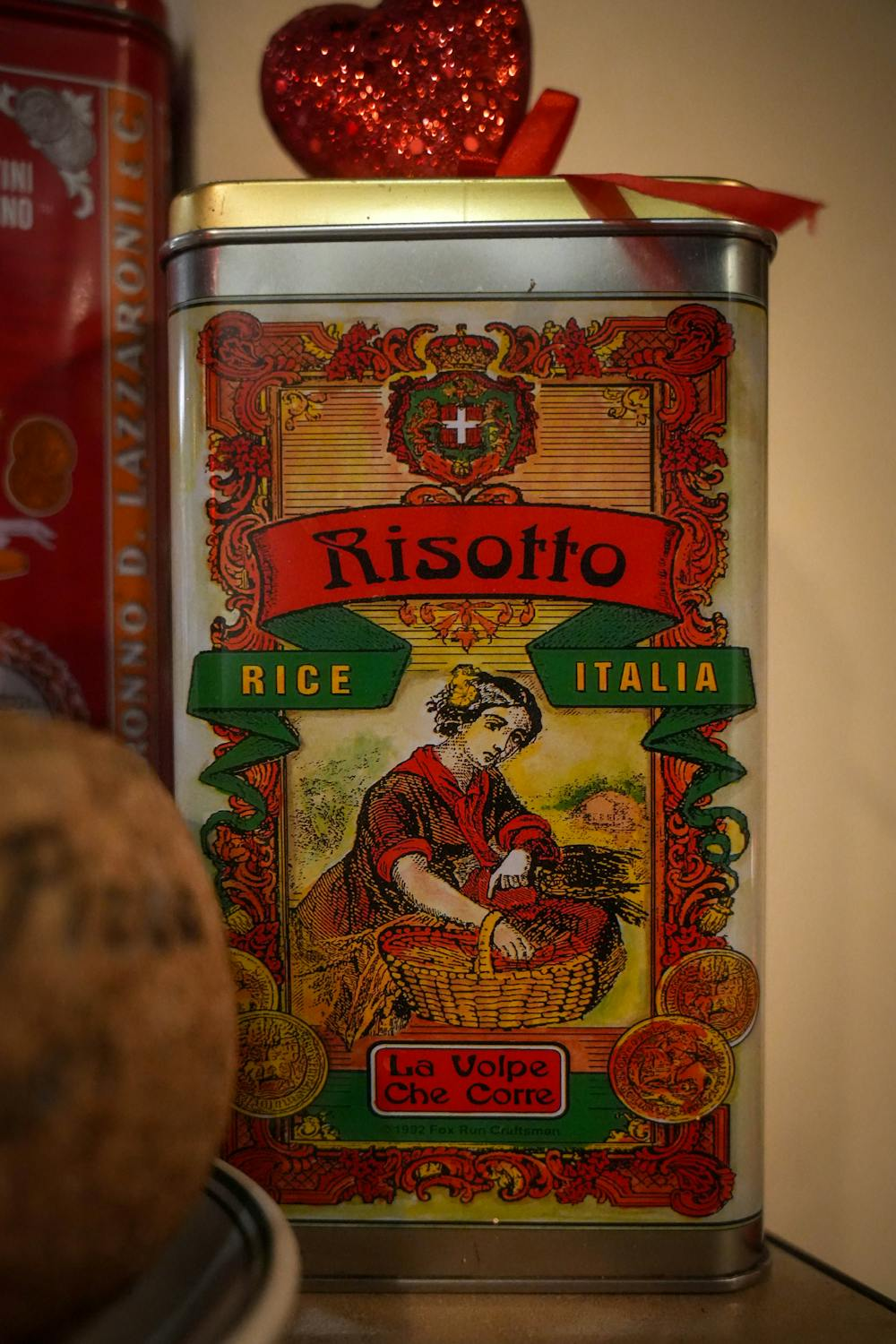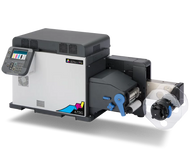The Science of Waterproof, Heat-Resistant, and Chemical-Proof Labels: What You Need to Know
24th Jul 2025
In today’s fast-paced industrial and commercial environments, labels do far more than identify products — they ensure safety, regulatory compliance, and traceability in some of the harshest conditions imaginable. Whether used in manufacturing plants, laboratories, outdoor storage facilities, or transportation networks, labels are expected to maintain their readability and adhesion despite being exposed to extreme heat, moisture, friction, and chemicals. A label that fails can result in lost shipments, safety violations, or even costly product recalls.
At DuraFast Label Company, we understand the science and engineering that goes into creating truly durable labels. It’s not just about slapping on a sticker — it’s about developing a complete labeling solution that can stand the test of environmental stress. This blog takes a deep dive into the advanced materials, coatings, adhesives, and printing technologies that power waterproof, heat-resistant, and chemical-proof labels.
We’ll also highlight the technologies behind some of our most rugged labeling solutions, such as the Afinia LT5C CMYK + White Label Printer and the iSys Apex 1290 Laser Label Press, which offer professional-grade results for industries with demanding labeling needs.
If you’ve ever faced challenges with smudging, fading, peeling, or label disintegration, you’re not alone. This guide is designed to help you understand what makes a label truly durable — and how to choose the right materials and printers to ensure your labels hold strong no matter the challenge.
Understanding Label Failure: The Harsh Realities
Before diving into the materials and methods that make labels tough, it’s important to first understand how and why labels typically fail. In most cases, poor performance is not the result of a single issue, but rather a combination of environmental stressors and material mismatches.
One of the most common issues is adhesive breakdown. Exposure to moisture, heat, and chemicals can weaken the bond between the adhesive and the surface, causing the label to peel off. This is especially problematic in industries like food processing, chemical manufacturing, and outdoor logistics where labels are constantly tested by extreme conditions. In such cases, standard label adhesives simply won’t do — specialized adhesives designed for high resistance and surface compatibility are essential.
Another major culprit is ink degradation. Labels printed using standard inks or toners may look crisp initially, but under exposure to water, solvents, UV light, or heat, the print can smudge, fade, or completely disappear. This not only undermines product identification but can also lead to regulatory violations — especially in pharmaceutical, hazardous materials, and medical device labeling.
Then there’s substrate failure — when the label material itself starts to warp, tear, or disintegrate. Paper-based labels, for instance, tend to absorb moisture and weaken, making them unfit for wet or humid environments. In contrast, synthetic materials like polypropylene and polyester offer much higher resistance to water, chemicals, and abrasion.
Many of our clients initially try to cut costs with standard materials only to discover that the expense of relabeling, reprinting, and dealing with compliance issues ends up being far higher. That’s why investing in thermal transfer labels or custom thermal transfer labels — both designed specifically for industrial use — pays off in the long run.
Understanding how labels fail is the first step in designing a labeling system that doesn’t. At DuraFast Label Company, we help businesses choose materials that match their application — not just their budget.
The Science Behind Waterproof Labels

Waterproof labels are essential in industries where exposure to moisture, humidity, or direct contact with liquids is unavoidable. Whether it’s for chilled food packaging, laboratory vials, marine equipment, or beverage containers, the ability of a label to stay intact and legible when wet is critical. But what actually makes a label waterproof?
The foundation of any waterproof label lies in the substrate, or base material. Unlike paper labels, which absorb water and break down, waterproof labels are made from synthetic materials like polypropylene (BOPP), polyethylene, or polyester (PET). These plastics are naturally resistant to water and don’t swell, tear, or delaminate when exposed to moisture.
However, the substrate alone isn’t enough. To create labels that maintain print clarity in wet conditions, ink compatibility and coating are just as important. For instance, using aqueous inks on a waterproof material may result in smearing unless the label surface is properly coated to lock in the ink. That’s why thermal transfer printing with resin-based ribbons is often the preferred method for waterproof labels—it provides crisp, permanent printing that won’t run when wet.
At DuraFast Label Company, we recommend premium topcoated direct thermal labels for certain waterproof applications. These labels feature a protective topcoat that helps repel moisture while maintaining thermal imaging properties. This is especially useful in logistics, medical, and foodservice industries where speed and durability go hand in hand.
It’s also essential to consider the adhesive. A waterproof label with a weak adhesive will still fail if the bond is compromised. Marine-grade adhesives or acrylic-based adhesives designed for wet surfaces are often used to ensure the label stays firmly in place—even when applied to surfaces that are cold, damp, or textured.
One fascinating innovation in this space is dry adhesives that strengthen under extreme conditions, such as those featured in a study by Case Western Reserve University. These materials hold potential for next-generation waterproof labeling, especially in cryogenics and high-temperature applications.
Whether you’re labeling shampoo bottles, frozen meats, or scientific samples, waterproof labels are an investment in consistency and reliability. Our clients often look to buy thermal label printers online to pair with these materials for a complete, in-house waterproof labeling system. When paired with the right printer and label stock, waterproof labeling becomes a seamless process rather than a costly challenge.
Heat-Resistant Labels – Built to Withstand the Heat
Heat presents one of the most punishing environments for labels. In industries such as automotive manufacturing, electronics, aerospace, food processing, and metalworking, labels are regularly exposed to high temperatures — sometimes exceeding 300°F (149°C). Under such conditions, standard labels are destined to fail. They may discolor, bubble, lose adhesion, or completely disintegrate. That’s why selecting heat-resistant labels is essential for operations where thermal exposure is a factor.
To create a truly heat-resistant label, every layer must be engineered for performance: the facestock, adhesive, and printing method all play a crucial role.
Starting with the facestock, polyester and polyimide films are among the top performers when it comes to heat tolerance. These materials don’t melt or warp easily and can retain their structural integrity in high-heat environments. Polyimide labels, in particular, are widely used on circuit boards and electronic components because they can endure solder reflow processes and other manufacturing steps involving high temperatures.
Next comes the adhesive. Many pressure-sensitive adhesives begin to fail above 150°F (65°C), which is why labels meant for high-heat environments must use silicone-based or modified acrylic adhesives. These formulations offer enhanced temperature resistance, ensuring the label adheres throughout production, storage, or transportation, even if temperatures fluctuate significantly.
Printing technology is equally vital. Laser and thermal transfer printers are both excellent choices for producing heat-resistant labels, particularly when paired with resin ribbons. These ribbons are designed to fuse permanently onto the facestock, resulting in crisp, smudge-proof text and barcodes that don’t degrade under heat. For example, the iSys Apex 1290 Color Laser Label Press is ideal for producing color labels that must withstand high-temperature conditions without fading or peeling.
Customers who rely on DuraFast’s solutions often purchase color label printers for sale that are compatible with synthetic facestocks and resin ribbons, ensuring their labels can take the heat — both literally and figuratively.
Innovations in dry adhesives are also influencing this space. According to the previously mentioned Case Western study, certain adhesives actually become stronger as temperatures rise, opening new doors for labeling applications that were once considered too extreme.
At DuraFast Label Company, we don’t believe in one-size-fits-all. Our labeling experts work with clients to match them with heat-resistant label solutions tailored to their operational realities. Whether you’re labeling engine parts or food containers fresh off the production line, the right label can make all the difference.
Chemical-Proof Labels – Designed for Tough Environments
When it comes to environments involving solvents, oils, cleaning agents, or corrosive chemicals, ordinary labels simply don’t stand a chance. Labels used in laboratories, industrial plants, cleaning product packaging, and chemical drums must be able to resist degradation and remain readable for safety, compliance, and traceability. That’s where chemical-proof labels come in — a vital component in the world of durable labeling.
The durability of a chemical-proof label starts with the label material. While paper labels will often smudge or disintegrate on contact with chemicals, synthetic materials such as polyester (PET), polypropylene (BOPP), and vinyl offer far greater resistance. These substrates are inherently non-porous and can withstand splashes and even prolonged exposure to harsh chemicals without losing integrity.
But material alone doesn’t guarantee chemical resistance — coatings and laminates play a key role. Overlaminates, typically made of clear polyester or polypropylene films, act as a protective shield over printed content. They preserve the label's readability even when exposed to alcohol, acetone, bleach, or other strong agents. For high-demand applications, UV coatings can also be added to enhance chemical and abrasion resistance.
Of course, print method and ink selection are critical. Labels exposed to chemicals need a print that won’t dissolve, blur, or fade. That’s why thermal transfer printing using resin ribbons is often the gold standard. Resin-based ribbons chemically bond to synthetic labels and provide the most resistance to solvents, water, and abrasion. The Afinia LT5C CMYK+White Label Printer is a standout option for businesses that require on-demand chemical-proof labeling with vibrant, high-resolution output. This printer’s ability to lay down white toner also allows users to print on transparent or colored materials — ideal for industrial safety labels and chemical packaging.
Chemical resistance also extends to the adhesive layer. Labels that peel or slide off due to chemical contact can pose serious safety risks. That’s why DuraFast recommends custom thermal transfer labels with industrial-grade adhesives tailored for chemical-rich environments. These adhesives are engineered to maintain a strong bond on a variety of surfaces, including HDPE, metal, and glass — even when splashed with corrosive substances.
The importance of reliable chemical-proof labeling can’t be overstated. Whether for regulatory compliance (such as OSHA’s GHS labeling standards), workplace safety, or product integrity, it is crucial to ensure your labels hold up under chemical exposure. This is especially true in industries such as pharmaceuticals, petrochemicals, cosmetics, and cleaning products manufacturing.
At DuraFast, we understand that no two environments are the same. That’s why we offer consultation services and a wide selection of thermal transfer labels for sale, specifically designed to meet the chemical resistance needs of modern industry. With our advanced printers and high-durability labels, your data stays protected — no matter how harsh the surroundings.
Applications Across Industries

The power of waterproof, heat-resistant, and chemical-proof labels is best understood through the lens of real-world applications. These labels serve as the invisible backbone of critical workflows across a wide variety of industries — ensuring safety, compliance, brand integrity, and operational efficiency.
In the healthcare and pharmaceutical industries, labels must remain readable and adhered in environments that involve moisture, refrigeration, and repeated chemical exposure. From lab sample vials to IV bags and pharmaceutical bottles, failure of label adhesion or legibility can lead to serious consequences. DuraFast's durable synthetic labels and resin-ribbon printing solutions ensure that patient and product data remain intact, even in sterilization processes or cold storage.
Food and beverage manufacturers rely heavily on moisture-resistant and heat-resistant labels for their packaging. Labels must endure steam tunnels, refrigeration, condensation, and heat sealing processes while maintaining a clean, professional appearance. With offerings like the Afinia LT5C, companies can even produce eye-catching color labels in-house that hold up under temperature shifts — all while complying with food-safe labeling regulations.
In the chemical industry, label durability is not just a convenience but a compliance requirement. Labels on chemical drums, bottles, or industrial cleaning products need to withstand solvents, oils, and harsh handling. At DuraFast, we recommend options such as thermal label printers to support GHS-compliant printing with robust resistance to smudging, scratching, and chemical exposure.
For manufacturing and electronics, high-heat and abrasion-prone environments demand labels that can withstand extreme conditions. Whether it’s barcodes applied to engine blocks, PCBs in assembly lines, or parts that go through painting and baking processes, our thermal transfer labels and laser printer-compatible substrates ensure that data stays scannable throughout the product’s lifecycle.
Even logistics and warehousing depend on tough labels. Exposure to humidity, rapid temperature shifts during shipping, and rough handling require waterproof and tear-resistant labels. In such cases, our clients frequently explore our range of premium topcoated direct thermal labels or opt for durable barcode scanners and design software to build complete, efficient labeling systems.
Ultimately, these versatile label solutions are not confined to one niche. They are transforming labeling practices across the industrial landscape — and DuraFast Label Company is leading the charge, helping businesses adapt with confidence and precision.
Choosing the Right Label for Your Needs

Selecting the ideal label for your application isn't just about aesthetics — it's about performance, compliance, and cost-effectiveness. With so many variables involved, from environmental conditions to surface materials, choosing the right label requires both product knowledge and application-specific insight. At DuraFast Label Company, we help our customers navigate this complexity with expert guidance and a robust catalog of durable labeling solutions.
The first factor to consider is exposure. Will the label face moisture, chemicals, high temperatures, or UV light? If your product will be stored outdoors, in a freezer, or subjected to heat during production, it's essential to select a substrate that can handle those conditions. For example, polyester (PET) labels offer superior resistance to both UV light and chemicals, while polypropylene (BOPP) is often the go-to for waterproof applications at a more affordable price point.
Next comes the printing method. For high-durability applications, thermal transfer printing is typically recommended due to its compatibility with resin ribbons that provide smudge-proof and chemical-resistant print quality. If you’re producing high-resolution labels in-house and need rich, durable color output, you might consider the iSys Apex 1290 Color Laser Label Press. It’s especially suited for medium-to-high volume runs that demand heat-resistant toner fusion.
It’s also crucial to consider the surface the label will be applied to. Some adhesives work best on smooth surfaces like glass or plastic, while others are designed for textured materials such as cardboard or metal. Our line of custom thermal transfer labels can be tailored to include aggressive adhesives for rough or curved surfaces, ensuring the label stays in place under any condition.
For businesses that frequently change label content or run variable batches, on-demand printing with machines like the Afinia LT5C offers the ultimate in flexibility. These printers handle everything from short production runs to full-color compliance labels with the durability needed for harsh environments.
Budget considerations also play a role. While durable labels can cost more upfront, they save money in the long term by reducing relabeling, errors, and compliance issues. For businesses seeking value, our line of affordable blank inkjet labels offers a durable, customizable option for in-house production with inkjet printers.
Not sure where to start? Our team at DuraFast Label Company can walk you through the process. We evaluate your environment, product, and regulatory needs to help you choose the perfect label — one that performs just as well as it looks.
Built to Last

In industries where failure isn’t an option, labels must do more than just stick — they must endure. Waterproof, heat-resistant, and chemical-proof labels are not merely a luxury; they’re a necessity for businesses that operate in demanding environments. Whether it's a pharmaceutical company needing sterile labeling, a food brand requiring moisture resistance, or an industrial operation managing exposure to harsh solvents, the right label is foundational to efficiency, compliance, and safety.
At DuraFast Label Company, we understand these challenges. That’s why we offer not only high-quality materials but also advanced printing technologies that match the rigor of your environment. From the cutting-edge Afinia LT5C color label printer to the rugged iSys Apex 1290 for industrial-grade applications, our solutions are designed to meet and exceed expectations.
Whether you're looking to buy thermal transfer printers for heavy-duty chemical labeling or need thermal transfer labels for sale that resist heat and abrasion, our catalog covers every possible use case. Our clients across North America trust us for labels that survive the toughest of conditions — and we don’t take that trust lightly.
In addition to equipment and materials, we also provide solutions that support full label system integration. This includes tools like the best label design software for printers, which ensures your labels are not only tough but also precise, scannable, and compliant. No matter your industry or labeling challenge, DuraFast is here to guide you every step of the way.
Durability, compliance, print quality, and performance — they all start with choosing the right partner. Let DuraFast Label Company help you engineer your labeling system for the future. Because when your labels last, your reputation does too. Contact us today to learn more!
